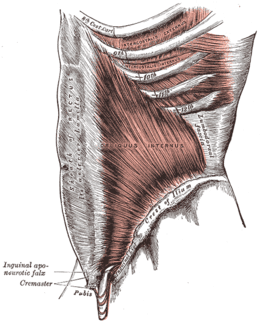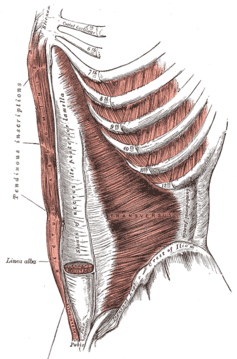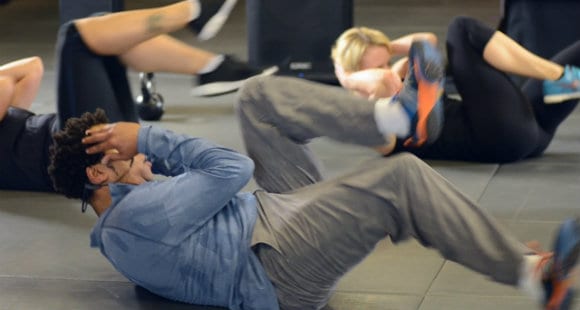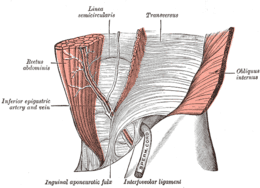By the healthiergang writer , ISSA certified personal trainer and student at SaNIS (School of Nutrition and Sports Integration).
How many abs per day?
 The abdomen, one of the muscles most desired in the field of aesthetics, able to make many people lose sleep, so much so that it has now been concluded that "the abdomen is done at the table".
The abdomen, one of the muscles most desired in the field of aesthetics, able to make many people lose sleep, so much so that it has now been concluded that "the abdomen is done at the table".
True, but only partially.
In fact, if on the one hand, to make the abdomen visible it will be necessary to have a percentage of body fat that tends to be low, on the other there are some tips that can be given to maximize the effectiveness of our training sessions. This will vary based on two big factors:
1. What do I need it for?
2. What stage of my preparation am I at?
Let's go by degrees.
What are the abdominal muscles for?
The muscles of the abdomen are different, let's see the main ones:
1. Il rectus abdominis flexes the chest over the pelvis and vice versa and lowers the ribs thus acting as an expiratory muscle. It also plays a minor role in torsion and torso tilt. Its contraction increases abdominal pressure.
2. The internal oblique intervenes on the respiratory dynamics.
3. The contraction ofexternal oblique it affects the abdominal wall and the rib cage, contributing to the respiratory dynamics.
4. even the across the abdomen intervenes in the respiratory dynamics. It also has a weak synergistic role with the other anterolateral abdominal muscles by acting in the rotation and flexion of the bust.
From this summary we can get an idea of what the function of this muscle group is. It is concretized first and foremost in the bust stabilization. In fact, if on the one hand we have all the posterior kinetic chain in charge of extending the trunk, the anterior one (therefore the abdomen) will counterbalance the action by flexing it. Basically all this musculature carries out an anti-gravitational action.
 The fact is, however, that the most is accomplished by the posterior muscles (extensors) as in our body it would tend to project forward (due to the line of force generated by the weight loads of organs, skeleton and muscles, especially at the cervical level). Basically, therefore, the antigravity function is mostly carried out at the level of the posterior trunk muscles.
The fact is, however, that the most is accomplished by the posterior muscles (extensors) as in our body it would tend to project forward (due to the line of force generated by the weight loads of organs, skeleton and muscles, especially at the cervical level). Basically, therefore, the antigravity function is mostly carried out at the level of the posterior trunk muscles.
Secondly, the abdomen intervenes in the respiratory dynamics.
Third, not least, there is a role in the compression of the viscera (guys this is not "belly", it is "abdominal relaxation").
So here's a first important take-home message: the abdomen is a functional muscle for everyday life and even more for the performance of almost all athletic gestures.
Why do you train the abdomen?
You will have understood why in the next paragraph. A first food for thought is therefore that the abdomen does not train only for aesthetic purposes but also as a function of the physical activity we are going to perform.
PERFORMANCE TRAINING
In this case, to decide how and how much to train him, we need to evaluate the overall picture. If the abdomen is heavily involved in our sessions, then it will make sense to go and train it specifically with a low frequency so as not to cause excessive stress with recovery difficulties.
Conversely, if in our physical activity he is involved in a more mild way and / or less frequently, then it will be sensible to seek a greater volume of work aimed at a transfer in the main performance.
Let's take a couple of examples:
1. Subject 1, weightlifting, training 5 days a week, morning and afternoon, 1 day only in the morning. Training on competition gestures with periodizations of volume and intensity, variation of the exercises taking into account the functionality and the transfer on the target gestures (use of chains, bands, etc.). In short, a fairly typical picture. We see that the volume of work is already quite high, on the other hand the core in general is heavily involved in the various exercises. In this case, a specific job is therefore recommended only in the event that there is a lack of the abdomen in the muscular synergy of the gesture and, in any case, the work must tend to be kept low (volume and intensity).

2. Subject 2, rugby player, technical training 5 times a week, gym training 3 times a week. In this case the abdomen is involved in a lesser way, however the technical work on the gesture has a reduced volume as it is divided with the work in the gym. Here, too, it may make sense to integrate specific work for the abdomen by seeking a transfer on performance on the pitch. A fairly high job can be expected, for example 10 15'at the end of the session in the gym (then 3 times a week).
TRAINING FOR AESTHETIC PURPOSES
So we see that the speech changes a lot based on the purpose for which we are going to train it. Let us now cite the last case, which I know many are interested in, relative to training for aesthetic purposes.
The choice will obviously depend on the protocol followed in the gym, a greater volume of work will necessarily involve going to remove it from the abdomen, especially where you work with heavy multiarticulars or in any case gestures that require a strong involvement (ie I would not massacre abdominals before pulling 200 kg of Front Squat).

In general, however, it is advisable to start from the assumption that the abdomen is a very thin musculature, mainly composed of connective tissue and not very hypertrophied. Basically, the job opportunities are reduced. Another point is the fact that it has a continuous action during the day, therefore it is "used" (pass me the term) to high volumes of work.
My advice is therefore to work it with a relatively high load intensity, focusing on the bending action of the chest. (crunches baby!). To make the movement as synergistic as possible it will be necessary focus on contraction and breathing while running.
As for the frequency, generally 2-3 workouts per week are more than enough, remember that it is not very hypertrophied and is subject to continuous work so overdoing it is not necessary.
What Preparation Period Are You In?
This is also a factor to think about. On the one hand we must bear in mind that in periods of tapering it will be necessary to reduce the general volume of training, so we will also have to intervene on the training of the abdomen possibly even removing it completely (the example of our weightlifter, in this case at the gates of a competition, bean sock).
On the other hand the period of preparation assumes a peculiar importance in the case of a bodybuilding athlete (or in any case in training for aesthetic purposes). In periods of definition, approaching a competition, it will be necessary to try to tone the overall muscles without forgetting the abdomen. Therefore increasing the volume and training frequency of the abdomen can be a very wise move (obviously going to reduce it appropriately in the peaking week).
An increase in work will also allow to obtain a greater vascularization in loco. In addition to increasing the frequency, it will also be useful to diversify the work, working on different intensity ranges and TUTs and with different gestures and exercises. In short, in this period, variation is the key.
An example can be a session 4 times a week in which twice we will work with lower loads and higher volumes, and the other two times with relatively high overloads, reduced volume and concentrating on activation in maximum contraction .. so to speak ..
Other Tips
Train the abdomen always after the session, except for a possible warm-up at the beginning. This because it is synergistic with many movements, having a pre-fatigue of the same can result in not being able to perform properly (again, I would not kill myself by abdominating them before pulling 200 kg of Front Squat).
Another tip is to work mainly on the flexion action of the chest trying to avoid the activation of the hip flexors (which very often get overtired, especially with high volumes). Obviously the other speech don't just flex the chest as many do with unlikely executions. Let me be clear, the abdomen works the same, in this case, however, isometrically, and it's a whole other story.
 Last advice, the abdomen is functional to the stabilization of the chest, this translates into an important role at the postural level, therefore training must be weighted according to the musculature of the posterior kinetic chain. Excessive strengthening of the latter often leads to the accentuation of the lumbar curves, in the same way, however, a greater strengthening of the abdomen can lead to postural imbalances of the same level. An excellent solution in this regard are executions, such as the plank, which working the CORE in its entirety.
Last advice, the abdomen is functional to the stabilization of the chest, this translates into an important role at the postural level, therefore training must be weighted according to the musculature of the posterior kinetic chain. Excessive strengthening of the latter often leads to the accentuation of the lumbar curves, in the same way, however, a greater strengthening of the abdomen can lead to postural imbalances of the same level. An excellent solution in this regard are executions, such as the plank, which working the CORE in its entirety.
Conclusion
Summarizing the key points of abdominal training:
1. Don't overdo it if you are already heavily involved in your sport.
2. Frequency 2-3 times a week for aesthetic purposes with a focus on load intensity and contraction.
3. Increase the frequency in periods of preparation for bodybuilding competitions to recover in terms of muscle tone and vascularity.
4. Vary the exercises as much as possible, always focusing on the flexion action of the chest.
However, always keep in mind that the chances of hypertrophy are limited therefore miracles are not made. The abdomen makes up mainly for the muscle quality and for the low level of fat mass. In short, to get on stage the abdomen is mostly done at the table, but for a new PR, work in the gym is king.
Last thing! The side bent works the lumbar, not the cross in the abdomen ... to say ...


























